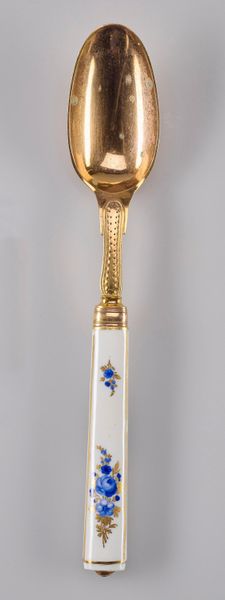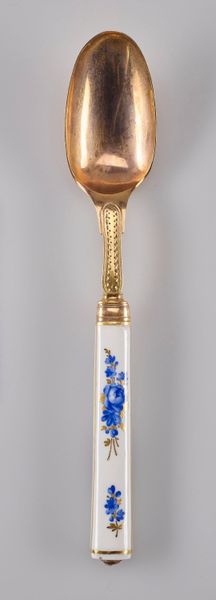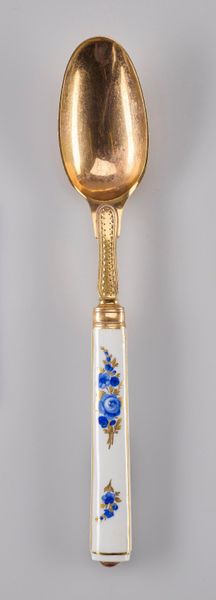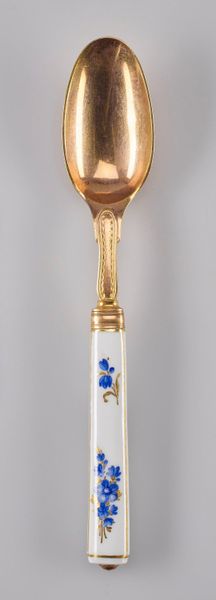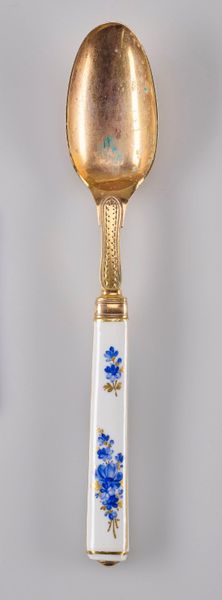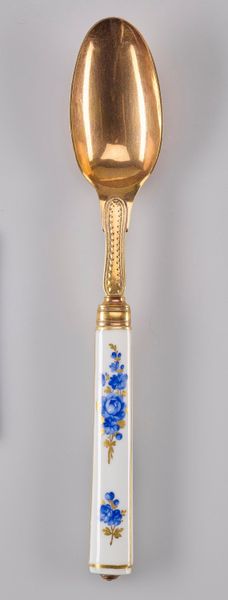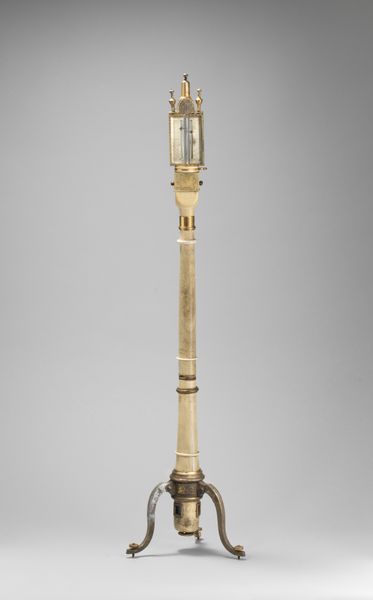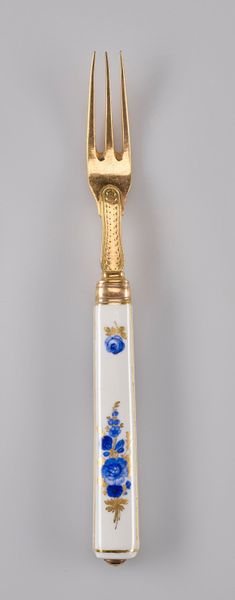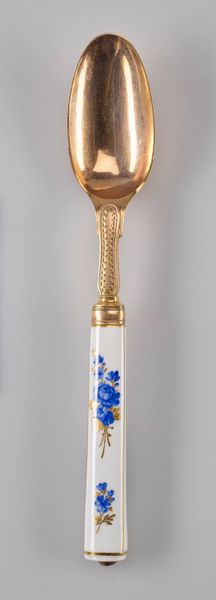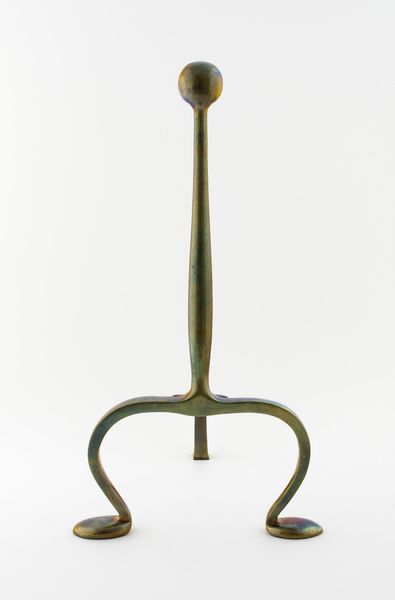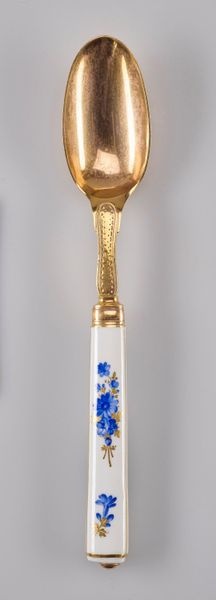
brass, sculpture
#
brass
#
medieval
#
form
#
sculpture
#
line
Dimensions: 14 1/2 x 8 7/16 x 1 5/16 in. (36.83 x 21.43 x 3.33 cm)
Copyright: Public Domain
This processional cross was likely made in Ethiopia, by an unknown artisan, and from bronze or brass. The cross's intricate lattice work was made through the lost wax casting process. A mold was formed around a wax pattern, which was then melted away. Molten metal was poured into the resulting cavity, allowed to cool, and then the mold was broken to reveal the final form. This process requires incredible skill. Each cross would have been unique, the pattern carefully articulated in wax before being transformed into solid metal. The image at the center, probably cast along with the lattice, shows the Holy Family surrounded by angels. This cross would have been held aloft during religious processions. The rough surface and visible imperfections remind us of the human labor involved in its creation, connecting us to both the devotional and the technical expertise required to produce such a powerful object. By understanding the materials and making, we can fully appreciate this cross's enduring cultural and spiritual significance.
Comments
minneapolisinstituteofart over 1 year ago
⋮
Ethiopia was the first African nation to adopt Christianity, more than 1600 years ago. By the 1400s, Christian art in Ethiopia was flourishing, combining Christian imagery with an expressive use of pattern and form. Nowhere else, for instance, are there so many types of Christian crosses.
Join the conversation
Join millions of artists and users on Artera today and experience the ultimate creative platform.
